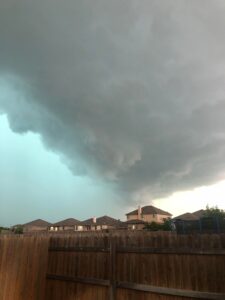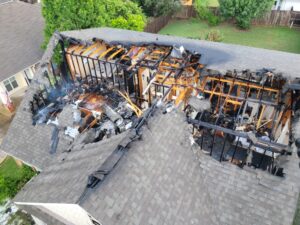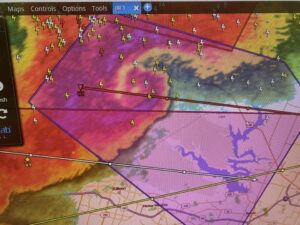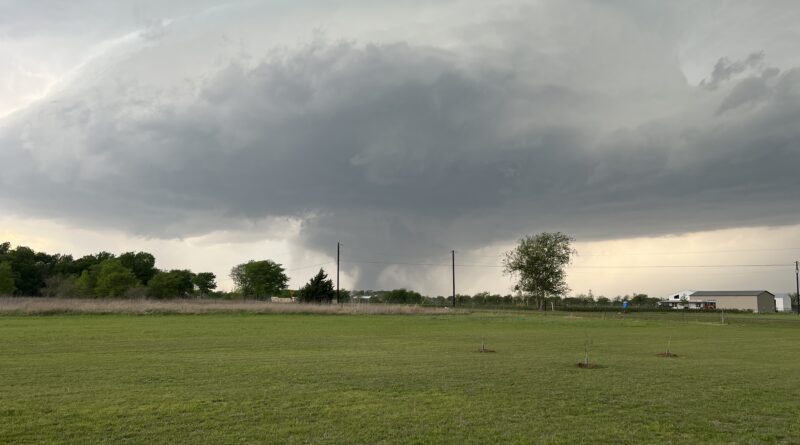Be Prepared for Life’s Unexpected Moments
By BRANDY CRUZ

Like many others during difficult times, Jennifer Henager saw a need and helped. She was one of the many volunteers at Temple’s medical shelter during Hurricane Ike in 2008. What she couldn’t have imagined at the time was that her volunteerism would lead to a profession she considers rewarding because she has the opportunity to help others in their time of need every single day.
“I saw an opportunity to help people during a difficult time in their life. Emergency Management covers a wide variety of potential bad times for a larger number of people,” Henager explained. “I just try to make a positive impact for as many people as possible, to make their hard time a little less hard by providing resources or providing assistance with unmet needs.”
Henager, who now serves as the program manager with Emergency Management of Temple, said it’s natural for people to think danger will never happen too close to home, but it’s not always a wise mentality to have, especially when the unexpected does happen and your family isn’t prepared.
“A lot of people tend to have that, ‘It won’t happen here’ mentality, so it’s an interesting challenge to get people to see the importance of being prepared and thinking ahead,” she shared.
September is National Preparedness Month and since Central Texas seems to be a hotspot for just about every emergency possible, it’s important for residents to be prepared for the worst case scenario, even if they think it will never happen to them.
“National Preparedness Month is just an opportunity to focus on preparedness for individuals and families at home, so we really want to encourage people to start thinking about making a plan. If something were to happen, where would you go? What would you need to take with you? If something were to happen at home, are you prepared to be without electricity for a brief amount of time? If you need to evacuate with your pets, have you thought about what you need to take with you,” Henager explained. “A lot of people think about some aspects of what you need to take, but not necessarily all of it, so we’ll put out information about things to think about.”

As the resident expert with the city of Temple, Henager said some of the things people should consider are their family’s specific needs. Not every family has the same needs, so considering what it takes to care for one’s family day in and day out needs to be addressed when making a plan. Whether there are infants at home, children or adults with special needs, family pets and a wide range of other issues are pertinent things to consider.
It is advised to prepare to be self-sufficient for 72 hours, while emergency responders work to regain power, clear roads or other issues. Basic emergency kits should include bottled water, non-perishable food (beans, rice, or canned food), a manual can opener, flashlights, batteries, first aid kit, whistle, maps, garbage bags, plastic sheeting or tarps, duct tape, paper and pencils, weather radio with backup batteries, blankets and prescriptions. For those with pets, insure there is enough food and water for them, as well as bowls, medicine and even puppy pads or a litter box.
“If you have dietary restrictions, salt issues, if you’re diabetic, any of those types of things. Thinking about what your family needs day in and day out that maybe might not be the norm for other families. Say you have a pet that has arthritis. We give our pets medicine, just like we take our medicine, so we need to think about their needs as well,” Henager explained. “Talk to your doctor and have an extra seven day supply on hand. If you take heart medicine, you want to make sure you still have that in case the pharmacy is not open or you can’t get to the pharmacy.”

The basic items for a kit can fit in a small box or bag. Since infants or small children will need a lot just for themselves, Henager said a separate bag can be used for them. Consider things such as diapers, wipes, ointment, powdered or canned milk, baby food and other items to make the child comfortable.
Something else people don’t consider is that emergencies can happen anywhere, so it is advised to keep a kit in the home, car and at work. Vehicle and work emergency kits may look different, but should still keep one safe for 72 hours.
“It is good to have a kit in your car, but it’s going to look a little differently than it does in other parts of the country,” she said.
Vehicle kits should include basic necessities, as well as emergency signals, such as reflective markers and flares. Although bottled water won’t last long in the hot Texas summer, Henager said some people keep coolers in the cars with bottled water and switch out the ice every few days.
At work, she said people could also consider keeping a change of clothes, toothbrush, toothpaste and deodorant in case they have to be there for a prolonged period of time.
In the event of a natural disaster, such as a tornado, the city is busy managing all the issues in a timely manner.
“Most of our responses will start off fairly similar, but there are differences depending on what it is. If we are monitoring the weather and see that there is potential for something the emergency management office is obviously aware of that and if we need to, we’ll set off the sirens. We will open the EOC (Emergency Operations Center) if there’s damage,” Henager said. “We’ll deal with whatever the response need at that time. If there’s debris clean-up, if we have traffic lights that are out and we need traffic control. Of course, we’re always dealing with the response of 911 calls, so those are still going on while we’re dealing with the response activity, so trying to make sure we have the resources where we need them.”
Despite — or because of — the hectic life of an emergency responder, Henager said she loves what she does.
“It’s never boring. There’s always something going,” she shared. “I just love helping people. I love trying to put things in place to make things better … meeting those needs that maybe people can’t meet for themselves.”
LEARN MORE
Website: staysafetemple.com




